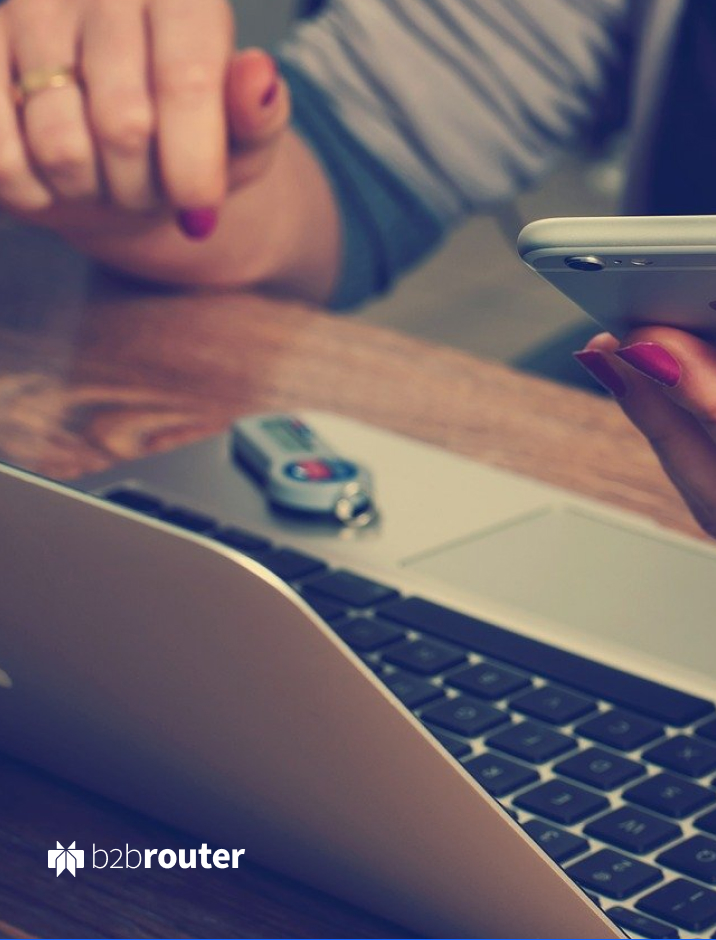
What is an electronic invoice? E-invoice
Times have changed and we no longer rely on sending paper bills from a supplier to a buyer or vendor anymore since the advent of e-invoicing. Indeed, the method of sending invoices in an integrated electronic format, has helped companies to streamline their invoicing processes, reduce costs and reduce human error in the accounting process.
Therefore, electronic invoicing has become a common practice in the B2B setting, but it comes with some challenges. Businesses are grappling with the best practices for using e-invoicing while ensuring compliance with regulations. So, let’s define what a true electronic invoice is: It contains all the necessary supplier data in a format that smoothly integrates into the buyer or vendor’s accounts payable system without requiring additional data entry. Genuine e-invoices typically come in standard Internet-based web forms, XML formats, electronic data interchange (EDI), or Peppol formats.
On the other hand, Word documents, PDFs, scanned paper invoices, or faxed invoices are not considered e-invoices – we’re talking about a whole new level of invoicing efficiency here! So, let’s explore the world of electronic invoicing, solve the most common doubts, and learn how to create an electronic invoice for free.
A quick history of e-invoicing
For over thirty years, e-invoicing has transformed the way businesses handle invoicing, starting with EDI formats. Since then, e-invoicing has continually evolved and improved, making it an increasingly popular choice among businesses. The recent years have witnessed a surge in the adoption of e-invoicing, as organizations everywhere have recognized its remarkable benefits. One of the main advantages is the seamless integration of data into their software or accounting systems, eliminating the need for arduous manual data entry and reducing errors.
However, initially, many organizations hesitated to embrace e-invoicing due to the perceived high costs associated with the new technology. Moreover, some of their partners were not investing in the technology at all, and even if they were, the data exchange was cumbersome due to the lack of standardized formats. This major change demanded attention and adaptation. Switching to e-invoicing wasn’t easy, especially after years of following traditional methods. But as time went on, the advantages became apparent, it wasn’t long before more and more companies and organizations joined the movement, recognizing the potential of this technology.
Today, though, the landscape has changed drastically. E-invoicing has become increasingly affordable, and more businesses are embracing this streamlined approach to invoicing. The ease and efficiency it brings to financial processes have proven to be a game-changer, saving time and resources while minimizing errors. On the other hand, the evolution of the Internet played a crucial role in simplifying the creation of web forms and invoices, allowing seamless information exchange between companies, locations, and industries.
Types of e-invoices
There are two types of electronic invoices:
- Electronic invoices in unstructured format: In this type, invoices need manual typing, and upon receipt, they require manual encoding, registration, and storage. An example of unstructured format is a PDF document.
- Electronic invoices in structured format: These invoices are easily understood by computer systems, meaning they are encoded to automate information management by the computer. For this reason, they are usually prepared in XML or UBL. As the computer receives them, it automatically encodes, records, and archives the invoices.
Undoubtedly, if we aim to accelerate procedures and reduce the time spent on mechanical processes, e-invoices in structured format are more useful.
Can I turn my paper invoices into electronic format?
Sure, if you need to change your invoices from PDF to a structured format, you can start with any scanning software. Keep in mind that this system will also require further encryption. Ideally, you should be able to use e-invoicing software that facilitates the creation of the invoice or allows integration with your management system or ERP, as mentioned above.
What are the benefits and advantages of e-invoicing?
We have already mentioned some of the benefits: such as agility and security, among others. However, that’s not all. Electronic invoicing also reduces paper consumption and, of course, it also facilitates the management and automation of information. Moreover, it can easily integrate into a computer-based management system, which helps with accounting as well as reducing errors. In addition, it eliminates costs, and thanks to the ease of archiving, it reduces the use of physical space. Furthermore, it improves customer service and helps prevent fraud. It’s a win-win situation for any business.
Electronic invoicing and billing come with a ton of benefits like:
- Reduced costs.
- Faster payments.
- Time savings.
- Removal of paper and manual processing.
- Increased accuracy.
- Improved cash management.
- Improved supplier relationships.
- Improved dispute handling.
- Improved visibility
- Optimized cash management.
- Increased productivity.
- Improved compliance.
In addition to all these, one of the best advantages of electronic billing and invoicing, is the level of integration you will have with partners, vendors, suppliers and other partnerships within your business. There are some great invoicing softwares and tools that many businesses are using and integrating into their business systems. For instance, one of the most popular is the platform B2Brouter which is a fantastic tool to use to send electronic invoices.
When is an e-invoice required?
It actually depends on the regulations of each country as there is no legislation that regulates within global scale. Generally speaking, it is a requirement for all public administrations in the European Union to be ready to receive electronic invoices. In countries such as Spain, Italy, Switzerland, Holland, Belgium, Denmark and Sweden, electronic invoicing is mandatory for all suppliers of public administration. In the case of Italy, it is also the same for transactions between private companies.
If you need to create an electronic invoice, try our free electronic invoicing program. Fast and simple.